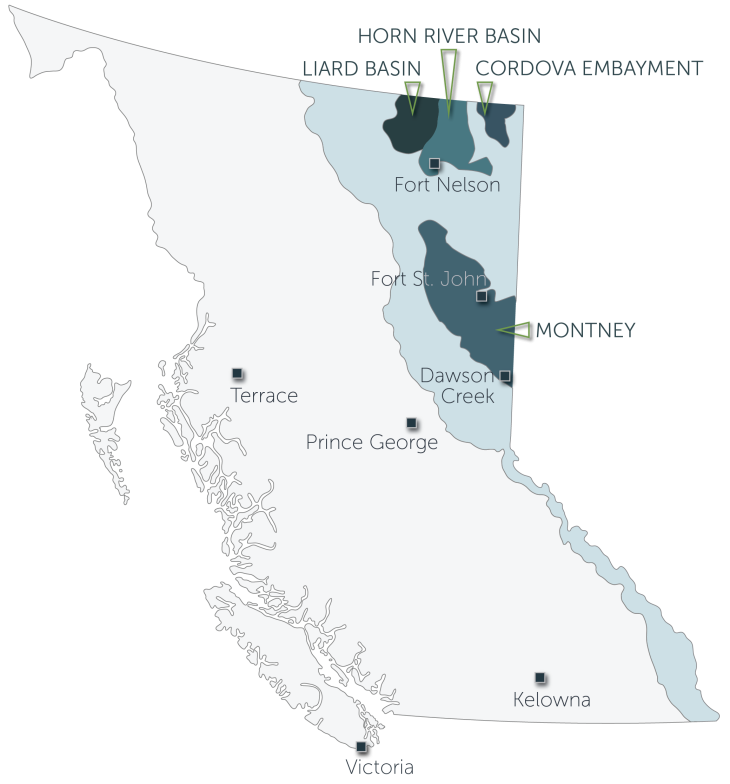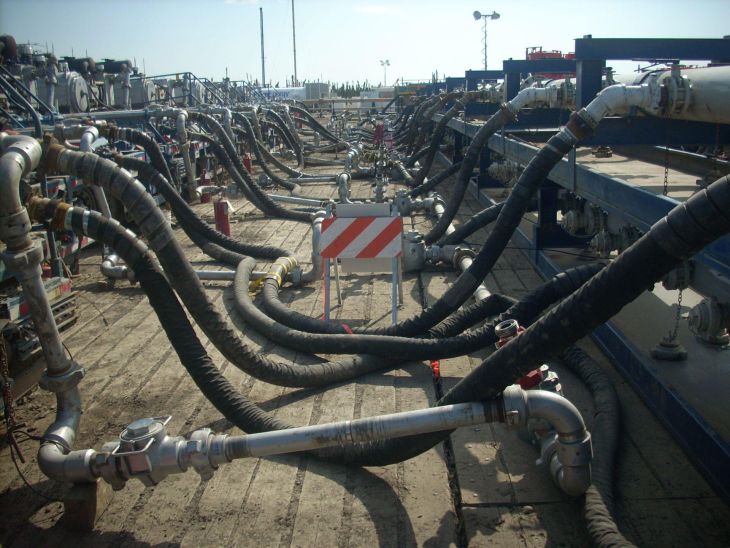Hydraulic fracturing or “fracking” is a technique used to create pathways in rocks deep underground to help get natural gas flowing.
How does it work?
Natural gas sometimes needs help to flow through rock, into a well, and then to the surface. To create pathways through the rock, fractures are created and kept open by pumping a mixture of sand, water, and a small amount of chemical additives down a well bore. This is done at a high enough pressure to fracture the rock and drive the sand mixture into the fractures. When the pumping stops, the sand helps keep these pathways open.
Hydraulic fracturing takes place deeper underground in B.C. than other areas in the world, sometimes over four kilometres deep, and beneath impermeable layers of rock. The majority of these wells target an area known as the Montney play, which covers approximately three million hectares northwest from the Alberta border.

How is hydraulic fracturing regulated?
The main legislation guiding the energy industry is the Oil and Gas Activities Act. This, along with other legislation and related regulations ensure oil and gas companies are developing energy resources responsibly, while also protecting public safety, safeguarding the environment, and respecting those affected.
The authority to regulate the energy industry is delegated to the BC Energy Regulator through the Oil and Gas Activities Act and our responsibility extends to the entire life cycle of a well—from permitting to drilling through to production and reclamation.
The hydraulic fracturing process on a well typically lasts from one to three days. The entire process for both preparation and testing after hydraulic fracturing can last several weeks.
Throughout this process, our compliance and enforcement officers conduct regular inspections to make sure companies are following all requirements. If we find a company isn’t complying, we’ll take the appropriate actions and share the results on our Compliance & Enforcement page.
How are we protecting people and the environment?
When it comes to hydraulic fracturing, the BCER has two main priorities—protecting surface water and protecting groundwater. In B.C., wells drilled are double-lined with cement and steel to a depth below any fresh water sources and if needed, more protective layers are added further underground. Short-term water use approvals and water licenses are also thoroughly reviewed to make sure there’s more than enough water available for environmental and community needs.
There are strict laws in place for the storage and disposal of fracturing fluids and natural gas producers are required to report all additives used and the ingredients in the additives. The website FracFocus.ca has more information.

Ongoing Oversight
- The BCER is a leader in the detection and mitigation of induced seismicity. New regulations and orders have resulted from BCER-led studies, which include shutting down operations if seismic activity reaches a certain threshold. We continue to work with industry, academia, and other agencies on ongoing research in this field.
- Partnerships with post-secondary institutions, such as UBC and UNBC, allow us to address key aspects of natural gas development including cementing and fracture propagation, assessments of groundwater sampling, impact on water quality and community readiness.
- The BCER can suspend industry water use in times of drought, as we did in northeast B.C. in 2010, 2012, 2014, 2017, 2018, 2019, 2021 and 2022.